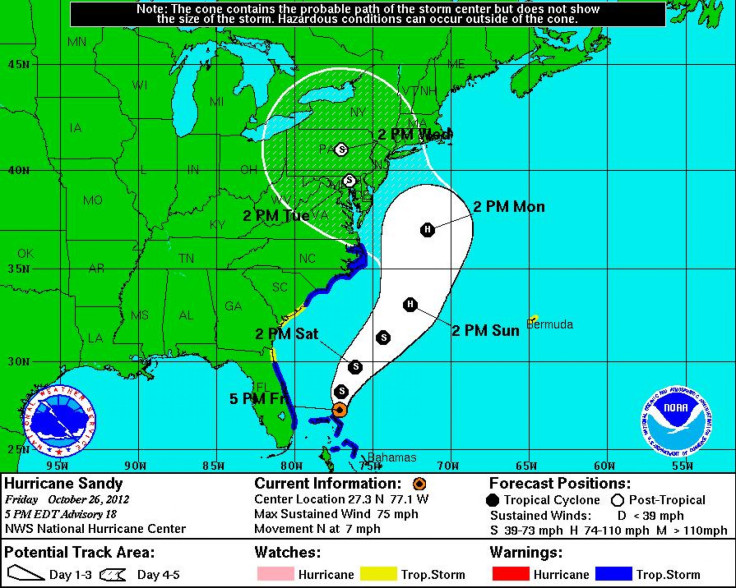Hurricane Sandy’s Path Has Airlines Scrambling

Hurricane Sandy -- the 19th named storm of the busy 2012 Atlantic hurricane season -- is barreling along a path toward the most populated corridor of the U.S., leaving the airline industry scrambling to set policies in place to stave off the worst.
US Airways was the first carrier Friday to issue a blanket travel alert for the entire mid-Atlantic region covering 44 airports from North Carolina to Maine.
US Airways representative Liz Landau said the airline will allow passengers to change their trips fee-free online (in most cases) for flights between Oct. 29 and Oct. 31. Fliers are encouraged to travel either just before (Oct. 26-28) or just after (Nov. 1-4) the storm.
Landau said the airline will remind people of its advisories and provide up-to-date information on its website, Twitter, and Facebook pages throughout the weekend.
American Airlines, meanwhile, issued a wide-reaching travel alert for the East Coast that covers 22 airports from Raleigh, N.C., to Buffalo, N.Y. Anyone traveling between Oct. 28 and Oct. 31 can now change a flight for dates before Nov. 4.
American Airlines representative Kent Powell said, “[A]s the storm’s path becomes clearer, we’ll determine which cities will be impacted and will issue a travel waiver as appropriate.”
Delta Air Lines also issued an alert for those flying to or from its destinations from South Carolina to New York between Oct. 29 and Oct. 31. Delta customers can edit their itinerary online fee-free for travel before Nov. 4.
Delta representative Morgan Durrant said the carrier would not cancel any flights Friday or Saturday, but would not comment beyond that.
New York-based JetBlue has similarly waived change and cancel fees, as well as fare differences, for customers traveling to and from airports in New York, Washington, and Richmond, Va., on Oct. 29 and 30. Customers can rebook for flights through Nov. 1 using an online waiver code.
Budget carrier Spirit Airlines initiated a “hurricane buster policy” that allows passengers in and out of New York, Baltimore-Washington, and Atlantic City, N.J., who are traveling between Oct. 29 and Oct. 31 to rebook free of charge for dates before Nov. 7.
United Airlines was the only major carrier yet to issue a travel alert for the mid-Atlantic region as of late Friday afternoon, though it will likely follow suit.
Airlines typically waive ticket-change fees and cancel flights long before a hurricane arrives to help cut the number of travelers and flight-crew members stranded. Canceling flights well enough in advance also keeps planes out of the way of danger and allows airlines to resume service faster after the storm passes.
Moving the planes out of a storm's path, however, can prove a risky move as the storm’s track can easily change, creating a situation where hundreds of flights are canceled unnecessarily.
In Hurricane Sandy’s case, major delays and hundreds of cancellations are all but certain for the beginning of the coming workweek as forecasters give the storm a 90 percent chance of hitting the East Coast. Among the airports in the storm’s projected path are some of the nation’s busiest: New York's JFK, New York's LaGuardia, Newark (N.J.) Liberty, Philadelphia, Washington Dulles, Washington's Reagan National, Baltimore-Washington, and, possibly, Charlotte (N.C.) Douglas and Boston Logan.
Nearly every major domestic airline has a hub at one of these airports, and even relatively moderate delays could have a ripple effect across the nation and beyond. If the so-called Frankenstorm becomes the three-headed monster meteorologists predict, widespread cancellations that leave thousands of passengers stranded for days may be in the forecast for the coming week.
© Copyright IBTimes 2024. All rights reserved.






















